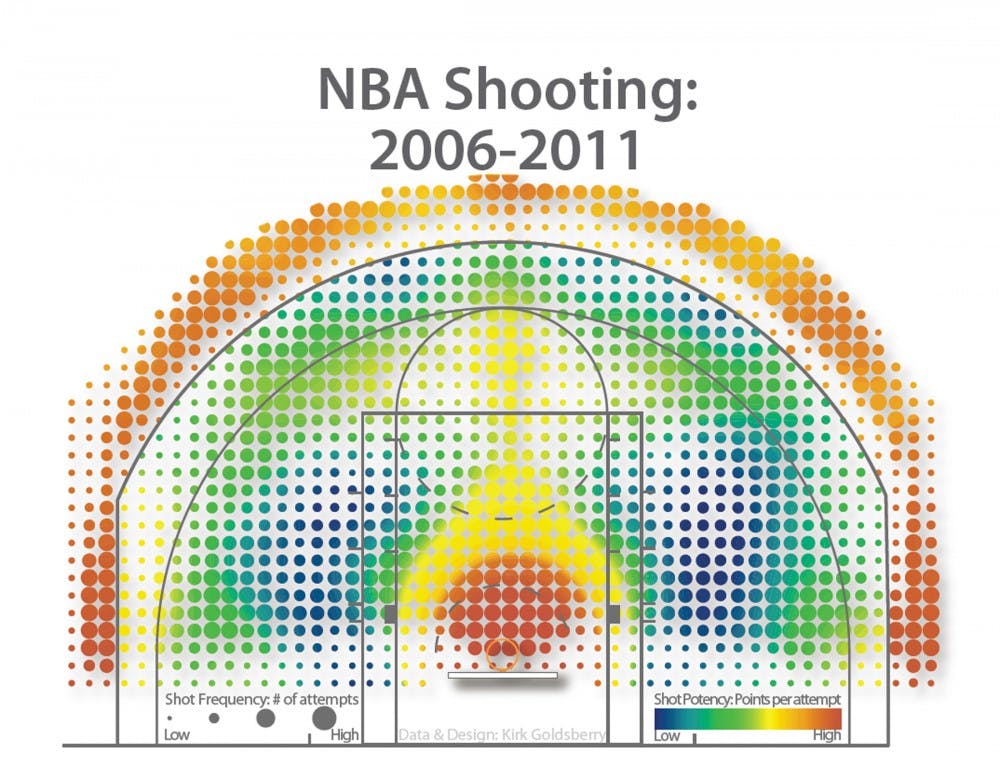In his spare time, Kirk Goldsberry is trying to innovate the way people think about basketball shooting.
In the last year, the MSU assistant professor of geography, specializing in geographic information science and cartography, has tracked every shot taken in the NBA in the last five years.
“I’m a huge basketball fan,” Goldsberry said. “I’ve always wondered about player’s shooting, so I can use technology like it hasn’t been used before.”
Goldsberry discussed his research March 2 and 3 at the MIT Sloan Sports Analytics Conference.
In Goldsberry’s paper “CourtVision: New Visual and Spatial Analytics for the NBA” — which was awarded runner-up at the conference— Goldsberry analyzed shooting performances for every player in the NBA. In his research, Goldsberry strove to find an answer to one of the most difficult questions in basketball: who is the best shooter in the NBA?
Players such as Tyson Chandler, the league leader in field-goal percentage with nearly 70 percent, and Kobe Bryant and LeBron James, possibly the two best players in the game, are considered by some to be the best shooters. But according to Goldsberry’s research, which player is on top still is unclear.
However, Goldsberry said a way to end the debate is by relying on range percentage more than just field-goal percentage to determine the best shooter. Through his research, Goldsberry found Steve Nash has the highest range percentage with 31.6 percent, which means he shoots more effectively from a wide range of spots on the court compared to other players.
“Steve Nash averages more than one point per attempt from the most areas on the court, Ray Allen is second,” Goldsberry said. “I think this is a better measure of a player’s true shooting potential than field-goal percentage.”
Nene Hilario, the Denver Nuggets’ center and last year’s league leader in field-goal percentage, only had a range percentage of 3.7 percent — meaning he shot effectively from less spots on the court than Allen or Nash.
“It makes sense, (Steve Nash) is versatile,” chemical engineering freshman Bryce Reckling said about Goldsberry’s research. “Whether he’s guarded or not, he’s pretty dominant.”
Although this research is just what Goldsberry does in his spare time as a hobby, he plans to expand from just shooting to rebounding and turnovers, and where they happen the most or least.
“This shows how different players perform differently at different spots on the floor,” Goldsberry said.
Although it might be questionable why someone would spend so much time tracking such a thing, Goldsberry already has been featured on ESPN and in Sports Illustrated.
“It’s been crazy,” Goldsberry said. “I’ve always watched ESPN, but I never thought I would be on ESPN. I mean I’m a geography teacher.”
Support student media!
Please consider donating to The State News and help fund the future of journalism.
Discussion
Share and discuss “Geography professor tracks every NBA shot in last five years” on social media.







